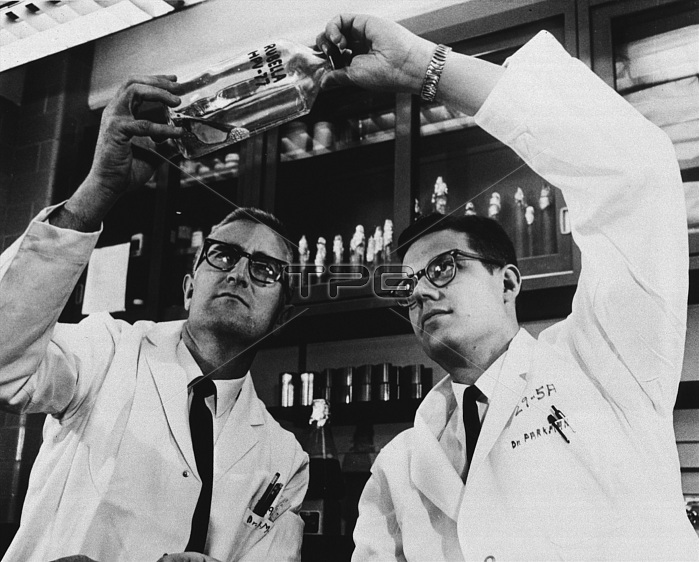
NIH scientists Meyer and Parkman inspect a culture of the virus used in preparing the vaccine. In 1964, a global epidemic of rubella, also known as German measles, spread to the United States. An estimated 12.5 million cases of rubella were reported, and 20,000 infants were born with birth defects as a result. Since unborn fetuses were especially vulnerable to the virus, it was imperative that an effective vaccine be developed. In 1966, Paul Douglas Parkman, MD, (born May 29, 1932) and Harry Martin Meyer, Jr., MD, (1929 - August 19, 2001) then working as scientists in the NIH's Division of Biologics Standards, reported that they had developed the first effective experimental vaccine for rubella. They prepared a weakened, live vaccine for human testing and inoculated 34 children. None of the children developed rubella nor did they transmit the disease to their unvaccinated playmates. There has been no major epidemic since the vaccine was introduced in 1966. In the 1970s, the rubella vaccine became a component of the measles-mumps-rubella vaccine (MMR), now commonly administered to children at 15 months. Meyer died of lymphoma in 2001 at the age of 72.
| px | px | dpi | = | cm | x | cm | = | MB |
Details
Creative#:
TOP22163688
Source:
達志影像
Authorization Type:
RM
Release Information:
須由TPG 完整授權
Model Release:
No
Property Release:
No
Right to Privacy:
No
Same folder images:

 Loading
Loading